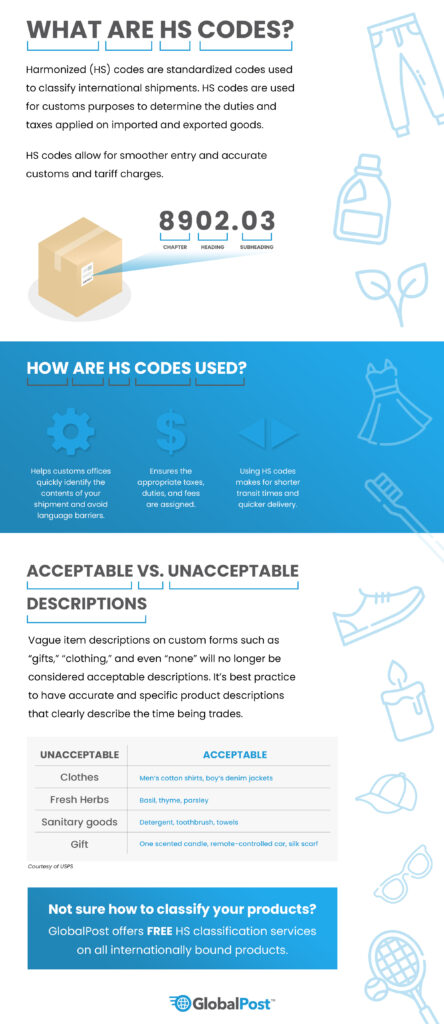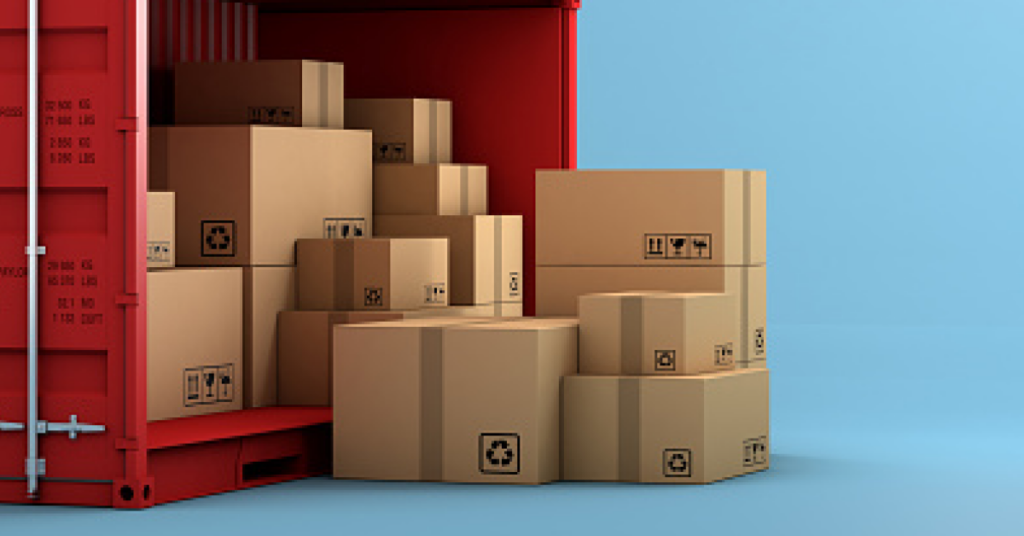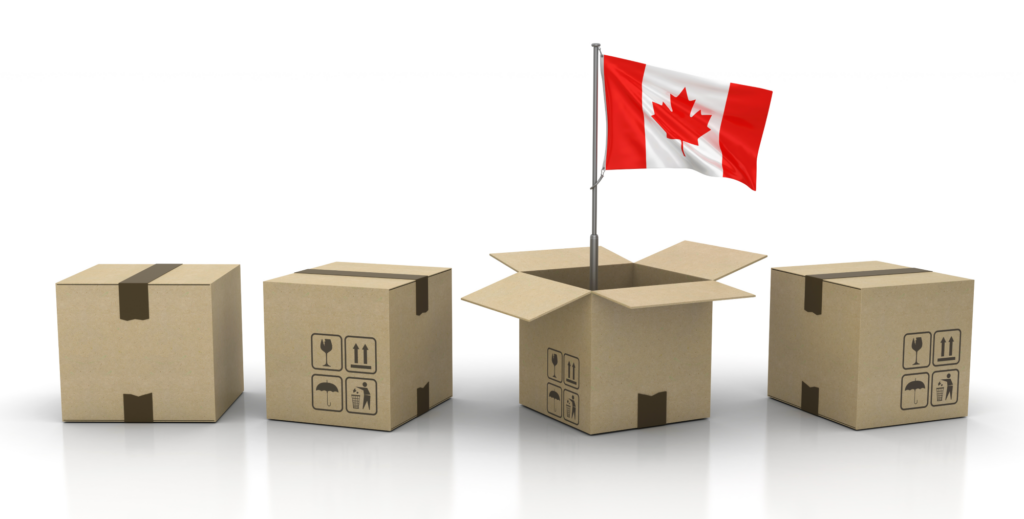What Are HS Codes?

You may have noticed a string of numbers on customs forms before, but you may not be familiar with what these numbers are and the information they represent. Harmonized System, or HS, codes are used to categorize the products in your shipment and identify their characteristics. HS codes are universally recognized, so you don’t need to translate this information before shipping. GlobalPost also provides merchants with resources to make international shipping accessible to businesses of all sizes, including tools and services to take the guesswork out of HS codes.
TL;DR – HS Codes are numerical values assigned to products to bypass language barriers and streamline international shipping. They’re now required for all shipments going through or to countries in the EU. GlobalPost merchants can look up their own HS codes, or GlobalPost will automatically enter HS codes based on the information provided.
Recent HS codes update
In the spring of 2023, HS codes became required for all shipments moving through and going to the EU. However, a grace period was established through July to allow shippers to adjust to these changes. Now that the grace period has concluded, failure to include HS codes on your shipments could result in penalties and returned shipments. This could have negative impacts on your business, causing loss of time, money, and customer satisfaction. Understanding where to find HS codes and how to incorporate them into your customs forms is now more important than ever.
How to find HS codes
Back in 1952, the World Customs Organization (WCO) was founded to help streamline the customs process. The WCO is responsible for creating HS codes as a way to improve communication between customs offices and keep international shipping as safe and structured as possible.
While the WCO doesn’t offer a full list of HS codes to the public, they do offer a list of resources, including email addresses for HS codes officials, to aid in your quest for finding the correct HS codes. However, GlobalPost offers free tools to keep merchants from having to chase down HS codes on their own.
As long as the information entered with your customs forms is correct, GlobalPost will automatically include the correct HS code for your shipment. If you would rather search for and enter an HS code manually, you can use our Free HS Tariff Lookup tool for up to five daily searches.
How to read HS codes
Each HS code consists of three different sections: a chapter, a heading, and a subheading. The chapter identifies your product, the heading classifies your product’s characteristics, and the subheading essentially combines the chapter and heading. For example, if your business ships roasted and decaffeinated coffee, the HS code for this product might be 0901.11. Let’s break this HS code down:
- 09 would be the chapter, aka coffee
- 01 would be the heading, aka roasted and decaffeinated
- 11 would be the subheading, aka coffee, roasted and decaffeinated
Your product would be scanned into customs as roasted and decaffeinated coffee, and therefore, handled as such by the customs officers examining your shipment.

HS code requirements
As we mentioned earlier, all shipments passing through or going to the EU must include an HS code within customs forms. A full list of countries requiring HS codes can be found below as well as on the USPS website.*
| Austria | Belgium | Bulgaria |
| Croatia | Republic of Cyprus | Czech Republic |
| Denmark | Estonia | Finland |
| France | Germany | Greece |
| Hungary | Ireland | Italy |
| Latvia | Lithuania | Luxembourg |
| Malta | Netherlands | Norway |
| Poland | Portugal | Romania |
| Slovakia | Slovenia | Spain |
| Sweden | Switzerland |
Additionally, vague and generic descriptions will no longer be accepted. These include descriptions like “clothing” or “food” that don’t provide specifics about your items. On a similar note, leaving the description blank or writing “N/A” or “none” is also unacceptable. Here are a few examples of acceptable vs. unacceptable descriptions for products:
| Unacceptable | Acceptable |
| Clothes | Men’s cotton shirts, girls’ leather vets, boys’ denim jackets |
| Fresh Herbs | Basil, thyme, parsley |
| Sanitary goods | Detergent, toothbrush, towels |
| Gift | One scented candle, remote-controlled car, silk scarf |
*All information in this section is courtesy of USPS.
Benefits of HS codes
While it may seem like additional work, HS codes are beneficial to the international shipping process. HS codes are universally recognized, so they help to bypass language barriers between customs offices and prevent merchants from having to try to translate descriptions into other languages. If a merchant isn’t fluent in their destination country’s language, this can lead to miscommunications and inaccurate translations, which can cause delays and potential penalties. Overall, HS codes provide an easier and faster customs process for both merchants and customers.
How GlobalPost supports international shippers
At first glance, HS codes may seem like yet another piece of information you’re required to enter when shipping internationally. However, the inclusion of HS codes on customs forms helps your package move through customs without any complications.
GlobalPost strives to make hassle-free international shipping a possibility for all growing businesses. That’s why we handle HS codes with the click of a button, so you can continue focusing on your business. GlobalPost uses the information included on customs forms to identify and add HS codes to your customs forms and offers merchants our Free HS Tariff Lookup tool.
Additionally, GlobalPost support is free for all merchants, and we’re happy to answer any questions you may have along the way. Contact us via email or by phone at 888-899-1255 from 6AM-6PM CT, Monday through Friday. Let us help you through any shipping challenge, and think of us as your private authority on international shipping.


